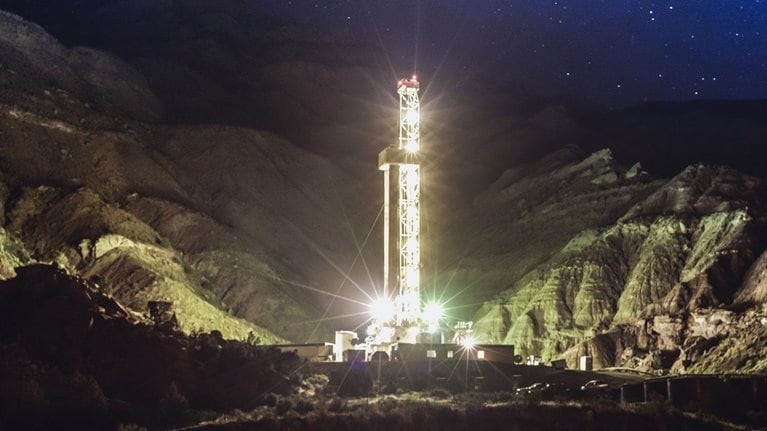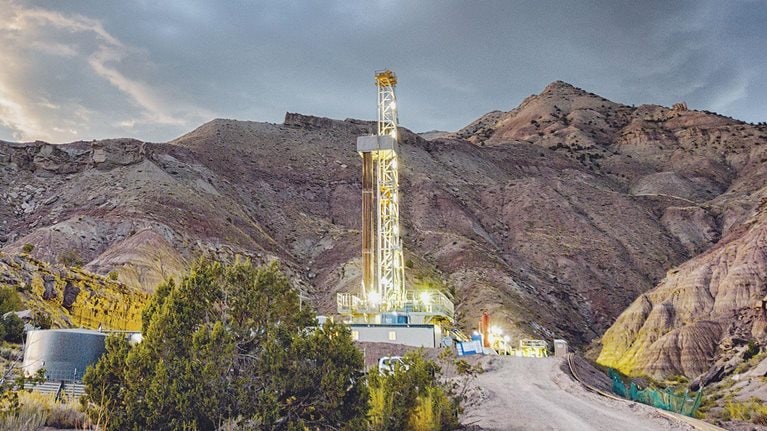During the growth-at-all-costs era of US unconventionals, initial rates for new wells went up and up as operators poured their energy, science, and capital into delivering what investors expected. However, they neglected to sustain base production with the same vigor, seemingly resigned to the rapid declines they observed in their wells.
In previous articles, we highlighted a shift in industry priorities from growth to generating cash. We argued that continuing to develop for volume is leading to shortsighted decisions and that operators can deliver value to their shareholders only by prioritizing capital efficiency over growth. In this article, we show that sustaining base production often delivers the highest return on capital and offer three starting points for companies seeking to transform their operations.
Future gains in capital efficiency must come from the base
US shale producers have excelled at improving drilling and completion execution: today’s wells deliver 74 percent more volume than three years ago.1 But operators now face a different challenge: actively managing thousands of base production wells. In a typical operator’s well stock, between 70 and 90 percent of wells are more than two years old, and these wells contribute 30 to 60 percent of total production.2 Now that the low-hanging fruit from drilling and completion execution has been captured, operators must turn to sustaining this large base.
That calls for a focus on traditional capital discipline. After all, drilling and completing new wells comprise only one type of capital investment that an oil company can make—and one that should compete for funds with other opportunities in a rigorous capital-governance process. Recent efforts to improve base production have targeted capital-intensive opportunities, such as enhanced oil recovery and refracturing (often as part of a plan to mitigate frac interference). However, the highest returns with the lowest risk usually come from more basic investments in production infrastructure, water management, and efforts to reduce lease operating expenses (LOE).
Typical producers see a net discounted profitability index (DPI)3 of five to 20 in key categories of base production maintenance, as compared with just two to four for new wells. In a rigorous capital-governance system, these base opportunities should take priority over new wells. Exhibit 1 shows how projects for one leading independent were ranked by DPI and capital-expenditure requirements. Production-management projects delivered a much larger economic return than new well drilling in all type-curve areas and required a smaller amount of capital expenditure.

Our work with shale producers has shown that transforming profitability should start with low-risk opportunities that pay out quickly. We have identified three areas that apply to all basins and make an excellent starting point: uptime, water management, and proactive lift. Exhibit 2 examines key elements of base production maintenance in these three areas and indicates the likely gains in DPI. Let’s look at each area in turn.

1. To keep cash flowing, keep wells flowing
In recent years, independents have devoted most of their efforts to drilling and completing new wells as efficiently as possible, but keeping thousands of wells flowing requires a different focus. To deliver the highest return on capital, operators need to keep facilities and compressors at maximum uptime and restore offline wells quickly.
A systematic focus on mean time to repair like that applied in manufacturing and other heavy industries is the key to restoring offline wells rapidly (Exhibit 3). Top-quartile operators are able to achieve restoration within two weeks, yet we see many operators unintentionally keeping large stocks of offline wells, with backlogs that can last months.

A similar approach can be used to reduce planned and unplanned compressor downtime, with an emphasis on strict oversight of third-party vendors used for gas lift compression. Through active performance monitoring, top-quartile operators can keep gas compression uptime above 98.5 percent, even for compressors they don’t own, yet many producers operate at only 96 percent uptime. Though this is a small gap, bridging it would deliver an increase in production that translates directly into an incremental improvement in the operator’s cash flow.
2. Bring water management into the digital age
A high return on investment can also be achieved by improving the efficiency of water management. Depending on the basin concerned, operators’ options include trucking, pipelines, and reuse at new wells. Their choice will be partly determined by factors that include subsurface drivers (such as the amount of water produced) and surface and regulatory constraints on disposal. Although reuse and pipelines can offer the greatest cost savings, the flexibility of truck hauling has made it a popular technique in most basins. Improving the efficiency of water-hauling fleets therefore represents an important means of reducing LOE and improving cash flow.

Value over volume: Shale development in the era of cash
Our experience shows that most operators can reduce total water-handling costs by 15 percent by adopting best-in-class practices. To do that, they need to target levers across the value chain:
- Supply chain. Operators can cut costs and enable predictable operations by consolidating vendors and introducing long-term contracts. They can extract further savings from their water networks through the careful design of haulage contracts, bidding processes, and negotiation strategies.
- Network optimization. By adopting advanced scheduling tools with oversight from control towers or dispatch centers, operators can continually optimize their system networks.
- Digital enablement. Tools ranging from GPS-enabled truck tracking to on-site apps and automatic metering and invoicing can drive incremental efficiency gains at every level. When combined with performance dashboards and advanced analytics, they can also be used to determine the best reuse or disposal sites across hundreds of square miles of operations.
3. Take a fresh look at artificial-lift management
The third major source of production-management opportunity is artificial lift. Almost every oil well requires artificial lift at some point in its life, but many operators install or activate it only when seeking to restore production in a well that has gone offline. To accelerate cash flow, they should instead install lift at the optimal economic time with respect to the uplift achieved, which comes before the point when lift is needed to restore production. The optimal economic time differs for each lift mechanism, usually occurring one to two years before loss of pressure in oil wells and at the moment of first liquid loading in gas wells (Exhibit 4).

Although easy to understand, this concept can be difficult to implement in the field. Producers have several levers at their disposal to enable proactive lift installation:
- using wellbore models to identify the optimal activation timing for type wells and correlating these timings to ranges of production and pressure to develop guidelines that can easily be applied across large well sets
- designing dashboards and triggers to flag wells before they reach their optimal activation time
- planning resources to ensure that rigs, equipment, and personnel are available to execute lift conversions or activations
- installing lift when a well is drilled for activation when needed, eliminating the need for workover.
A cash-focused approach to lift requires commitment from the organization, since reacting is always easier than active planning, but companies that make the investment will see the benefits.
Digitizing production operations
The common thread across all these production-management opportunities is the importance of digital transformation. The flow of data from wells and water trucks to field offices and production dashboards allows operators to develop an integrated view that drives optimization of the whole system.
Companies that operate in a lean way may well balk at the expense of the data infrastructure and equipment required to sustain digitally enabled operations. However, all independents are heading for a future of low-rate production per well. To achieve incremental gains with this type of asset, they will need to pursue marginal improvements at every operational step—which will require integration and digital enablement at the level of wells, pipelines, facilities, and production-management offices. Operators that invest in this infrastructure will see incremental improvements that add up to a big impact on LOE per barrel.
Implications for investors
Investors need to focus on base maintenance with the same level of scrutiny they apply to new development. In the recent era of growth, they mastered the language of completions and type curves, pinpointing value drivers for independents. In today’s era of cash, they need to give equal attention to production infrastructure and LOE trends. Operators that are able to outperform their type curve after one year of production or kick off a downward trend in LOE per barrel should command a premium.


